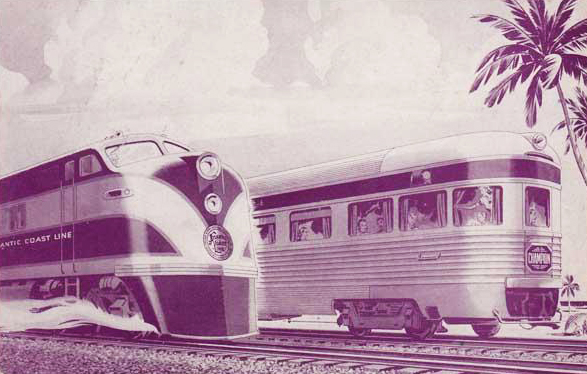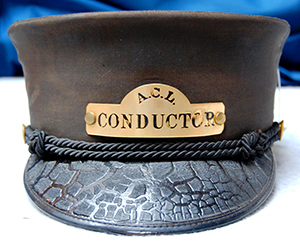See also: Seaboard Air Line Railway; Wilmington & Weldon Railroad; Transportation: Air and Rail (from NC Atlas Revisited)
The Atlantic Coast Line Railroad (ACL), one of three major railroads that served North Carolina during the twentieth century, traced its roots to a holding company called the American Improvement and Construction Company, incorporated in Connecticut on 19 Apr. 1889. The organizers of the ACL-like their competitors, the founders of the Seaboard Air Line Railway-were largely businessmen from Baltimore who began developing a transportation system in eastern North Carolina, South Carolina, and Virginia after the Civil War. On 5 May 1893 the Connecticut legislature approved a name change from the American Improvement and Construction Company to the Atlantic Coast Line Company as a step toward outright purchase of the various individual roads in the alliance.

North Carolina's Wilmington & Weldon Railroad, Norfolk & Carolina Railroad, and Southeastern Railroad, as well as the ACL of Virginia and the ACL of South Carolina, merged on 23 Apr. 1900 into the Atlantic Coast Line Railroad, a system of more than 1,500 miles. In April 1902 another 1,700 miles were added with acquisition of the Savannah, Florida, and Western Railway, whose main line ran from Charleston, S.C., to Tampa, Fla. North Carolina railroads that were eventually incorporated into the ACL included the Wilmington, Onslow, and East Carolina Railway, the Wilmington & Manchester Railroad, and the Red Springs & Northern Railway.
The ACL was profitable throughout most of its history, reporting deficits only in the Depression years of 1933-35 and in 1938. Its creation by merger brought a number of advantages to North Carolina. General offices of the railroad were established in Wilmington and remained there until 1960, when they moved to Jacksonville, Fla. The excellent transportation service attracted industry to the state, and traffic agencies of the railroad throughout the country developed new business for its lines. The north-south main line across the state-through Rocky Mount, Wilson, and Fayetteville-was double-tracked and maintained to the highest standards. It offered dependable passenger service with modern equipment, including dining and sleeping cars on many trains.
As Florida's popularity as a retirement and vacation destination grew, new deluxe trains traveled between the Northeast and Florida cities, primarily in the winter season. The ACL fiercely competed with the parallel Seaboard Air Line Railway for the Florida traffic, and although the Seaboard had the advantage of reaching both coasts of Florida, its route was longer and hillier. The straight and level route of the ACL across the Carolinas and Georgia made possible some of the fastest travel in the country. In the late 1930s and 1940s new streamlined, diesel-powered trains called the "Champions" were introduced between Florida and New York. Even in the 1960s, when many roads sought to discourage passengers, the ACL remained passenger-oriented, though local and branch

Beginning in the 1960s, the Interstate Commerce Commission and other regulatory agencies approved mergers by parallel railroads seeking greater efficiency through coordination or reduction of overlapping services. By the 1950s the revenues of the ACL had been eclipsed by those of the Seaboard, which had long been the weaker system. In 1959 a study commissioned by the two railroads recommended merger, and stockholders approved the move on 18 Aug. 1960. A lengthy court battle followed in which other interests, including the city of Tampa, tried to prevent the merger. The U.S. Supreme Court ultimately decided in favor of it, and on 1 July 1967 the ACL and the Seaboard Air Line Railway became the Seaboard Coast Line Railroad (SCL).
In November 1972 the name "Family Lines Rail System" was adopted as a marketing device by the SCL and other lines. The Family Lines provided an integrated freight service, running trains from points on one of the railroads to points on another, and maintained joint agencies for soliciting business. The name also replaced those of the individual railroads on some diesel locomotives and other equipment. In January 1983 the Family Lines Rail System was merged with the Seaboard System. In July 1986 the Seaboard System, in turn, was merged with the northern-based Chessie System into the CSX Corporation, which took over what remained of the ACL.